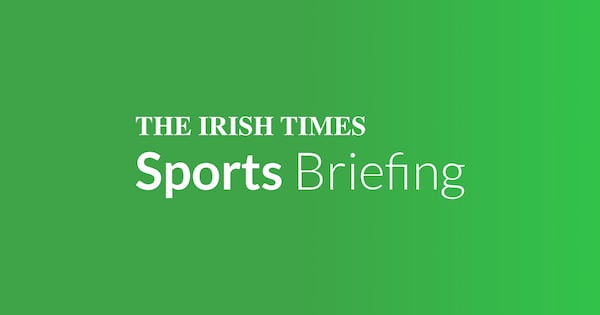Irish racing likes to give an impression of unified serenity. Rather like a swan on water all the kicking is supposed to be done out of sight. But every so often something bubbles up that gives a glimpse of a more turbulent undercurrent, like Willie Mullins’s views on billing at last weekend’s Dublin Racing Festival.
Galopin Des Champs had barely left the winners enclosure after Saturday’s Paddy Power Irish Gold Cup than the sport’s dominant figure let it be known he reckoned the race, and the exultant scenes surrounding a superb performance by “Galopin”, would have been more suitable for Sunday.
He described three-mile chasers as “the pinnacle of our game”, and added: “I’m a bit confused by the Gold Cup here being on the Saturday and not the feature race on the Sunday. It’s only a hurdle race that’s on tomorrow. You see how long it takes to make these sort of horses – they deserve the top billing.”
It isn’t an unreasonable point. The Cheltenham Gold Cup is the pinnacle. There’s a reason why it’s on the final day of next month’s festival as the climax to the entire event. As the Dublin Racing Festival unfolded, and with the relative anticlimax of State Man’s Irish Champion Hurdle success, Galopin Des Champs and the reception he got really did prove to be the highlight.
Cheltenham: Lossiemouth switched from Champion Hurdle to defend her Mares' Hurdle crown instead
JP McManus: From fearless young punter to Cheltenham’s most successful racehorse owner
Malachy Clerkin: Cheltenham’s thrill is gone as the best stories are replaced by the betting, the betting, the betting
Will Willie Mullins, with nothing left to prove, bow out after Cheltenham? Don’t bet on it
But it’s just as reasonable for Leopardstown and Horse Racing Ireland to point out that running the Gold Cup on day one delivers the best racing surface for the Dublin Racing Festival’s biggest prize. Considering the turmoil that not so long ago revolved around ground conditions on the chase course there, that’s hardly irrelevant.
The timing of Mullins’ observation was interesting though, the point conspicuously made at a moment of triumph and shortly after he had delivered a different kind of programming jab.
Following Final Demand’s romp in the Grade One Nathaniel Lacey Novice Hurdle he was inevitably quizzed about Cheltenham plans. Mullins ventured that he would not mind going back in trip with his hugely exciting unbeaten star, and then veered off-script.
“I’m wondering should this race actually be a two-and-a-half-mile race rather than a two-mile-six race,” he said. “I’m not sure we need a two-six race. But I know we’re very lucky and I shouldn’t be asking for it to be changed. It is what it is.”
Mullins rarely makes casual public utterances. The fact that they can sometimes appear informal is part of the urbane face he presents to the world, the one that suggests transforming the sport as he has is just some happy accident. So this was a Dublin Racing Festival one-two to prick up all kinds of ears.
That’s because it appears to be just the latest bit of sparring between Mullins and Horse Racing Ireland about race planning.
The decision some months ago to not only demote Leopardstown’s traditional St Stephen’s Day feature to Grade Two status but to move it to Naas clearly got under the champion trainer’s skin. Any rationalisation of an obviously bloated Graded programme was never going to suit the person so utterly dominant in it.
That was shadow boxing, though, compared to when things got properly scrappy on the back of last summer’s Horse Racing Ireland initiative to try to encourage competition by restricting 60 races this year to horses not trained by the top four trainers in the country.
Despite it being backed by the Irish Racehorse Trainers Association, the response from Mullins & Co was explosive. Ink on the press release was hardly dry before threats of legal letters were flying about.
None of the big four have been keen to talk publicly about it. Privately it is acknowledged Mullins was the key mover in opposing something that from the outside looked little more than a token attempt to try to appease wider political concerns about a lack of wider competitive bang for the government’s funding bucks.
An uneasy peace was restored in November when a compromise allowed for the 60-race series to go ahead but with a review in May to determine whether it will feature in the 2025-26 programme. Behind the PR jargon about consultative processes few believe it to be anything but a Horse Racing Ireland climbdown.
All of which has made for an intriguing glimpse past the brochure sheen racing prefers to give. For all how Mullins presents an impressively debonair figure he remains a ruthlessly competitive beast and a notably canny operator. Since he has mastered a ruthlessly competitive business none of that is a surprise.
For rubberneckers peering in from the outside spats like these make for intriguing viewing. Engaging as it is though, it does smack of notable communications failure that the sport’s most high-profile figure is signalling through the media and solicitors’ letters. That isn’t a good look for anyone, and hardly spells good news for everyone else further down the food chain.
In corporate terms then perhaps the ultimate of “learnings” for Horse Racing Ireland might be that presenting a harmonious face to the world requires first making sure as many ducks as possible are in a row before moving things about. After all it’s hardly the biggest pond in the world. And there’s little doubt as to the who’s the biggest beast in it.
SOMETHING FOR THE WEEKEND: MIRABAD (3.35) mightn’t like it very soft in tomorrow’s big handicap hurdle at Newbury but otherwise boasts a progressive profile at decent looking odds. He ultimately won impressively at Cheltenham in December despite running too free in the early stages.
There are plenty question marks surrounding the Denman Chase field but perhaps the least are around GA LAW (2.25) who can score under Gavin Sheehan.

















